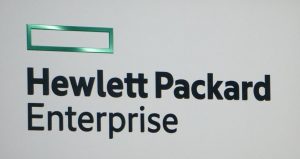 I have had a long relationship with Hewlett Packard and now Hewlett Packard Enterprise. Today, I sat in a strategy session with Paul Miller and Mark Linesch. It is an interesting time as these two guys have transitioned into marketing roles for the whole of HPE – reacting to the transition of IT purchasing away from silos and into an holistic strategy.
I have had a long relationship with Hewlett Packard and now Hewlett Packard Enterprise. Today, I sat in a strategy session with Paul Miller and Mark Linesch. It is an interesting time as these two guys have transitioned into marketing roles for the whole of HPE – reacting to the transition of IT purchasing away from silos and into an holistic strategy.
Creating a good strategy can be tough and marketing a strategy is even tougher. These two guys have been engaged for several years creating solutions within HPE that move towards a vision of hybrid IT. What has evolved is the desire from customers to operate on-premises infrastructure as a cloud – with the same acceleration and benefits that cloud brings in terms of agility. This was echoed in a later session with research from Futurum Research saying that customers, given the choice, would continue to operate on-premises or in their own colocation if they can operate it like the cloud. So, its finally confirmed from customers – cloud is a method of operation and not a destination.
Two major things emerged from the session – HPE and Hewlett Packard Labs may be heavily invested in research for new technologies and architectures, but it is trying to bring along the industry with partnerships. HPE worked diligently with other compute vendors to establish RedFish specification – a common programmatic way to interact with IP management interfaces across the industry. More recently, with the research around memory-centric computing architectures, the company is working with partners in the Gen-Z Consortium. HPE released early that memory-centric computing would require a lot of changes and innovations that would take time for software vendors and customers to adopt – meaning it needed to create a pipeline and support with other companies for this technology. Production products in this sector are around 2 years away from release.
This week’s Composable Cloud announcement is another step towards the operation of on-premises resources as cloud. Composable Cloud take the technology acquired with Plexxi and marries it with rack-mount ProLiant servers (specific SKUs currently) to be able to create a composable network fabric. Plexxi creates flat networks that are programmable through a controller management console. That leaves the company with a slightly split strategy currently between HPE Synergy which uses traditional networking and the Plexxi-based Composable Cloud for rack mount servers.
These guys also did something that many at HPE do not often know how to do – they admitted that there were mistakes and missteps in their strategy over the last 5 years. Helion Cloud, CloudSystem and others come to mind. These were not the right way to do hybrid IT. Do they have the right strategy now? Time will tell.

